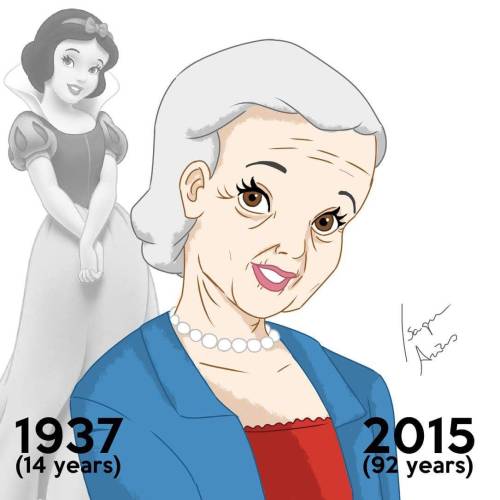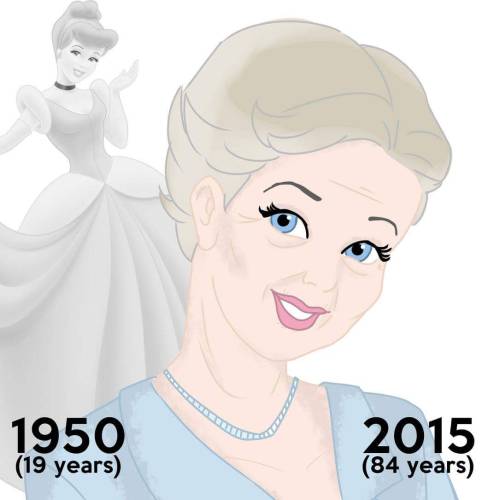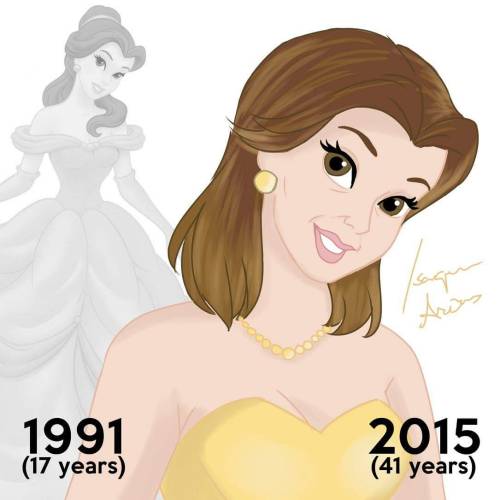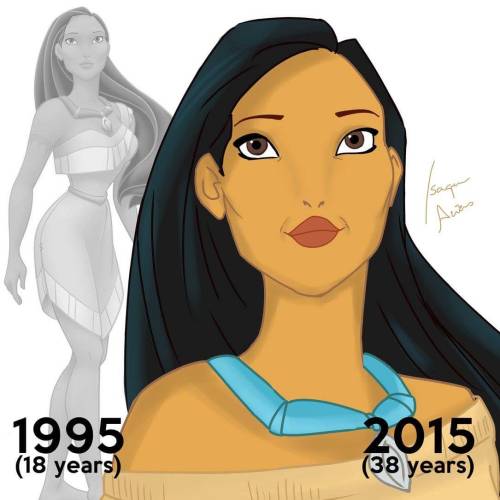So Sometimes I See Bros On The Internet Talk About How Women Couldn’t Have Worn Armor Historically,

So sometimes I see bros on the internet talk about how women couldn’t have worn armor historically, because it was too heavy for them.
Here is a picture of me wearing armor when I was a nerdy 14-year-old girl who was about 5 feet tall and weighed less than 95 pounds. I sometimes wore it for 6 hours straight in summer heat, and I would run and turn summersaults in it for fun.
And before you start asking: this was authentic full steel plate with a padded arming doublet underneath. It weighed so much that I couldn’t carry the plastic tub it was stored in on my own. It was heavy. But once I was wearing it I just felt like I was being hugged or wrapped up in a really heavy blanket. That’s how armor works. The whole point is that the weight is distributed across your whole body, and your whole body can lift a huge amount. It has nothing to do with how strong you are or how much you can bench.
So if you think women are too weak to wear armor, you are wrong on so many levels. It does not even matter if you believe in your little misogynistic heart that all women are defined by their physical inferiority when compared to men, because you are also just wrong about how armor works. Even skinny teen girls can wear armor just fine. Everyone can wear armor.
More Posts from Feralpaules and Others
Writing from Scratch #8
Now that we have gone over the four simple plot-problems (1, 2, 3, 4) and how they are solved through try-fail cycles, we’ll take a look at how to make complex, compound, and compound-complex plots through the same devices as sentence creation.
The first way we’ll try complicating a plot is by making the solution of the first noted plot-problem dependent on the solution of a second plot-problem, which stands in for easy solution prevention. We’re typically going to use dependent plots to strengthen audience satisfaction when the character is finally able to succeed. Or, like in the case-study we’ll look at today, they can be used to draw what appeared to be disparate plots together in longer works.
Read more on WordPress
Structuring a Series: Part III
Structuring a Series Part III: Planning a Series from 1 Book
Welcome back to Part III of Structuring a Series! If you haven’t read Parts I and II yet, you might want to. Or at least familiarize yourself with Dan Wells’s 7 Point Plot Structure. (No word on which one is a bigger time commitment.) Ok, so… you want to write a trilogy (or some other type of close-ended series with at least one arc running through the whole thing), BUT you only know what you…
View On WordPress
Writing from Scratch #4
The Milieu Plot
The problem of the milieu plot involves a problem of location or setting. The character is often either in a place they need/want to escape from or not in the specific place they need/want to be in. The try-fail cycles will involve traveling away from or to the location. Gulliver’s Travels, The Great Escape, and The Hobbit contain milieu plots.
The Lord of the Rings contains one very large milieu – the problem of getting the One Ring from the Shire where its been hidden for a number of years to Mordor where it can finally be destroyed. We can further break this down into smaller milieu plots. Let’s look at one: the problem of crossing the Misty Mountains. (And we’ll use the events as they occur in the movie, since more people have watched that than read the book)
Read More on WordPress
Writing from Scratch #1
Welcome to Writing from Scratch!
I’ve been writing a long time, and sometimes it feels like I lose the trees for the forest. Writing from Scratch is a chance for me (and you!) to get back to the basics of storytelling.
If you’ve never written a story before, if you’ve never felt like you could come up with one that would be worth writing, my hope is that if you follow along with me here, you will have the confidence and know-how to come up with an idea, build it into a story, and share it with the world.
These posts will be little, easy-to-digest nuggets. At the end of every post, look for a prompt and share your response in the comments!
What Is a Story?
A story can be defined by what it contains: at least one plot, character, and setting, and a style through which it is told.
Story Bits
To begin, let’s take a look at the second smallest unit of a story – the sentence. A sentence is a set of words that conveys a complete thought. And communication is fractal, meaning each part shares the same pattern as the whole. A story and its components, therefore, will also convey a Complete Thought.
Continue Reading on WordPress







Disney Princesses at their Current Ages
Outlining: one writer’s approach

…So I was puttering around on Twitter the other day, as one does, and in mid-putter found that someone on my timeline had just RT’d some tweets from a discussion about which approach to writing a book (or other longish piece of prose) was the best: pantsing or plotting. (”Pantsing”, for those of you who may not have come across the term, indicates just sort of making up a story as you go along, without establishing an underlying structure first or (sometimes) knowing how it’s going to end. “Plotting” means having some kind of plan about where the story is going to go – which I would normally take as meaning a premise or outline of some sort.)
And the person at the core of this particular thread, Rebecca F. Kuang, said this:
wait can someone who isn’t a pantser actually explain themselves? how detailed does your outlines get? do you really know the sequence of and content of every scene ahead of time? how you figure out smaller plot threads before you’re ~in~ it?
Since I’m emphatically not a pantser, but a four-decade plotter, I thought maybe I could bring something useful to the discussion. I asked how much detail on the process was wanted? as I’d been doing this for a while.
Rebecca said:
haha well what i’m most curious about is how you can “feel” the story’s tone/heft/urgency and connect with the characters and their plight from an abstract outline? i’d like to plan more, but i have a hard time thinking from a birds eye view
It’s a good question. But for a moment there I was brought up short, as the concept of an “abstract” outline kind of startled me. I couldn’t imagine what kind of outline that would be. And then the horrible thought occurred: Wait. Can it be that when some of these folks hear “outline” they’re thinking about that godawful high-school English kind of thing? Full of Roman numerals and numbers and capital letters and small letters – ?
Oh gods no. No no no no no no, it’s not like that at all.
…So I got into the subject a little: what novel outlines can look like, the trick I was taught about how to structure them, and how to make them work for you. (There are some references to Scrivener in there, because that’s what I use, but the advice will work perfectly well no matter what software or other instrumentality you’re using. My outlines tend to start out with pen and writing paper, but they don’t stay on paper for long.) There are also a couple of examples of the kind of outline you would send an editor when querying.
The thread got long, and a little disjointed. So when it was over I cut my bits together and polished them a little; and at the end added one (extremely important) afternote. Then I put it up on my main blog, right here. So if this is a subject that might interest you, maybe you want to take a look, as (to my great pleasure) I’m already hearing from people who say they’re finding the info / approach in the post useful.
Just as an FYI: A copy of the post will also go up on FicFoundry.com when that site goes live at the end of the month, as that’s where all my writing stuff will be going from now on. (It was past time that whole batch of content had someplace of its own. That’s getting sorted now.)
…And now back to work. (Yet another outline, as it happens…) :)
Structuring a Series: Part IV
Structuring a Series Part IV: Follow-Up
Welcome back to Structuring a Series! This is mostly a follow-up to the rest of the blog series. If you haven’t yet read Parts I, II, or III, or familiarized yourselves with Dan Well’s 7 Point Plot Structure, now’s a good time to do it! This installment is for structuring a series that is not a trilogy. Using this structure is best for series with a serialized structure (or mythology arc)…
View On WordPress
Writing from Scratch #7: The Event Plot
The Event Plot
The problem of an Event plot is a disruption to the status quo. The solution comes either from setting everything right again or adapting to the change. The Event plot is probably what most people think of when they think “what is a plot?” Any story that deals with a life-changing or world-changing event is an Event.
The first plot I analyzed, from The Expanse television series, is an Event plot. Let’s look at another: The Princess Diaries. As we did with Lord of the Rings, we’ll look at the movie rather than books because more people will be familiar with the movie (which is a damn shame).
The Event: Mia Thermopolis’s grandmother tells Mia that she is the princess of small European kingdom Genovia, and she must take the throne.
Read More on WordPress
you can make nearly any object into a good insult if you put ‘you absolute’ in front of it
example: you absolute coat hanger
Fall Reading Reviews '15
Fall Reading Reviews ’15
Every season I have a list of books to read; you can find out more information under the Great Book List page. This season I slightly overdid it with my commitments, but we’ll chalk it up to a learning curve. Below the read more are reviews (with minor spoilers) of Thorn Jack by Katherine Harbour, Fangirl by Rainbow Rowell, Flappers: Six Women of a Dangerous Generation by Judith Mackrell, The…
View On WordPress
-
 beneaththeshadows liked this · 2 weeks ago
beneaththeshadows liked this · 2 weeks ago -
 owltxt reblogged this · 1 month ago
owltxt reblogged this · 1 month ago -
 owltxt liked this · 1 month ago
owltxt liked this · 1 month ago -
 allyouneedarecats liked this · 1 month ago
allyouneedarecats liked this · 1 month ago -
 crinj-central reblogged this · 1 month ago
crinj-central reblogged this · 1 month ago -
 existing-still-forgotten reblogged this · 1 month ago
existing-still-forgotten reblogged this · 1 month ago -
 existing-still-forgotten liked this · 1 month ago
existing-still-forgotten liked this · 1 month ago -
 slaychill reblogged this · 1 month ago
slaychill reblogged this · 1 month ago -
 lentilwhim reblogged this · 1 month ago
lentilwhim reblogged this · 1 month ago -
 lentilwhim liked this · 1 month ago
lentilwhim liked this · 1 month ago -
 slaychill liked this · 1 month ago
slaychill liked this · 1 month ago -
 lost-carcosa reblogged this · 1 month ago
lost-carcosa reblogged this · 1 month ago -
 dragonmara123 liked this · 1 month ago
dragonmara123 liked this · 1 month ago -
 1trash-master1 liked this · 1 month ago
1trash-master1 liked this · 1 month ago -
 niall-townley liked this · 2 months ago
niall-townley liked this · 2 months ago -
 may-we-rest-well reblogged this · 2 months ago
may-we-rest-well reblogged this · 2 months ago -
 may-we-rest-well liked this · 2 months ago
may-we-rest-well liked this · 2 months ago -
 vnc5tc reblogged this · 4 months ago
vnc5tc reblogged this · 4 months ago -
 fantasticblazepoetry liked this · 8 months ago
fantasticblazepoetry liked this · 8 months ago -
 bambooni reblogged this · 8 months ago
bambooni reblogged this · 8 months ago -
 inkheartdream liked this · 8 months ago
inkheartdream liked this · 8 months ago -
 trolling-the-interwebs liked this · 8 months ago
trolling-the-interwebs liked this · 8 months ago -
 welpjesuisla reblogged this · 8 months ago
welpjesuisla reblogged this · 8 months ago -
 pannyexpress liked this · 8 months ago
pannyexpress liked this · 8 months ago -
 iwannaread13 liked this · 8 months ago
iwannaread13 liked this · 8 months ago -
 itspotatobee liked this · 8 months ago
itspotatobee liked this · 8 months ago -
 ja-no-definitely liked this · 8 months ago
ja-no-definitely liked this · 8 months ago -
 simbilmyne liked this · 8 months ago
simbilmyne liked this · 8 months ago -
 sabraeal reblogged this · 8 months ago
sabraeal reblogged this · 8 months ago -
 specspectacle reblogged this · 8 months ago
specspectacle reblogged this · 8 months ago -
 thedancingcat liked this · 9 months ago
thedancingcat liked this · 9 months ago -
 its-short-for-jackalope liked this · 9 months ago
its-short-for-jackalope liked this · 9 months ago -
 fistfuloflightning reblogged this · 9 months ago
fistfuloflightning reblogged this · 9 months ago -
 steadyangelrunaway liked this · 9 months ago
steadyangelrunaway liked this · 9 months ago -
 centralkvetchmonolith liked this · 10 months ago
centralkvetchmonolith liked this · 10 months ago -
 notobscurejustarcane reblogged this · 11 months ago
notobscurejustarcane reblogged this · 11 months ago -
 pleasantartisanhottea reblogged this · 11 months ago
pleasantartisanhottea reblogged this · 11 months ago -
 pleasantartisanhottea liked this · 11 months ago
pleasantartisanhottea liked this · 11 months ago -
 oleander-teacup liked this · 1 year ago
oleander-teacup liked this · 1 year ago -
 cyborg-empress liked this · 1 year ago
cyborg-empress liked this · 1 year ago -
 fistfuloflightning liked this · 1 year ago
fistfuloflightning liked this · 1 year ago -
 quickfixinator liked this · 1 year ago
quickfixinator liked this · 1 year ago -
 almondboy liked this · 1 year ago
almondboy liked this · 1 year ago -
 stupid-elf reblogged this · 1 year ago
stupid-elf reblogged this · 1 year ago -
 stupid-elf liked this · 1 year ago
stupid-elf liked this · 1 year ago -
 gypsumcoyote liked this · 1 year ago
gypsumcoyote liked this · 1 year ago -
 littleeyesofpallas liked this · 1 year ago
littleeyesofpallas liked this · 1 year ago -
 angrylittlesliceofpizza reblogged this · 1 year ago
angrylittlesliceofpizza reblogged this · 1 year ago -
 angrylittlesliceofpizza liked this · 1 year ago
angrylittlesliceofpizza liked this · 1 year ago
check out my main blog www.theferalcollection.wordpress.com and find fandoms and funstuff on www.theferalcollection.tumblr.com
103 posts